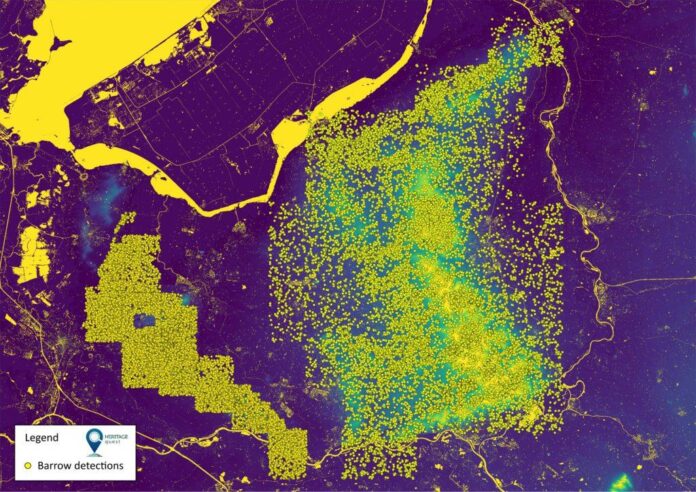Some 6,500 citizen scientists in the Netherlands have located a trove of archaeological remains across the Veluwe and Utrechtse Heuvelrug regions while working with researchers at Leiden University.
Their findings included more than 1,000 burial mounds dating to 2,800–500 B.C.E., in addition to prehistoric field complexes known as Celtic fields, charcoal kilns, cart tracks, and other archaeological objects.
The hunt was spearheaded by Heritage Quest, a collaborative venture between the university and Gelderland Heritage, a cooperative of 30 heritage organizations. From 2020, the project tasked its participants with examining some 600,000 LiDAR maps of the Veluwe and Utrechtse Heuvelrug areas on Zooniverse, a citizen science web portal, to detect new archaeological structures.
“With the help of thousands of citizen scientists, we were able to investigate a much wider region and in much greater detail than professional archaeologists alone could attain,” Eva Kaptijn, an archaeologist with Gelderland Heritage, told Artnet News.
“Without the volunteers, this project would have taken years and not be as reliable,” she said, adding that every map on Zooniverse was inspected by about 15 people.

Archaeologists from Leiden University out in the field. Photo: Eva Kaptijn.
Following the online discoveries by citizen scientists, archaeologists and archaeology students from the university headed out into the field in the summer of 2021 to verify the remains.
Taking soil samples from more than 300 burial mounds, the team found that 80 of these were previously undiscovered structures—effectively doubling the number of known mounds in the area. Further studies have led them to believe that more than 1,250 of the sites pinpointed by citizen scientists could be prehistoric.

An elevation map showing known and newly discovered burial mounds. Photo courtesy of Gelderland Heritage.
According to Quentin Bourgeois, an assistant professor of late prehistory at Leiden University, the new findings also show that a huge swathe of the Utrechtse Heuvelrug National Park, a nature reserve, is “full of prehistoric fields and burial mounds.”
“We previously did not know that there were so many burial mounds in the Netherlands!” said Konan Pruiksma, an archaeologist who assisted in the field work. With these findings, he noted, “we can learn the burial rituals of ancestors, how they lived and what they ate.”
At least 3,000 burial mounds have been discovered in the Netherlands, with most located in the Veluwe, a densely forested area in Gelderland. These mounds date to as early as the Stone Age up until the end of the Iron Age, created by piling dirt atop the burial chambers of one or more people.
Rather than being randomly built, these structures—notably the ones that run in a straight four-mile line across the municipality of Epe near Veluwe—bear out evidence of ritualized burials, with posts and stone circles found alongside the sites.

Archaeologists from Leiden University collecting soil samples. Photo: Eva Kaptijn.
In addition to reorienting the current view of prehistory in the region, Kaptijn said, the material gathered by Heritage Quest will go toward informing policymaking around archaeological preservation, one of the project’s stated aims. She added that the engagement of the Dutch public has been central to that effort.
“Studies, including our own, have shown that this results in better protection of the heritage,” she said about the participation of citizen scientists. “By engaging the public, awareness of important archaeological heritage is created as is a greater sense of place and a feeling of ownership.”

























